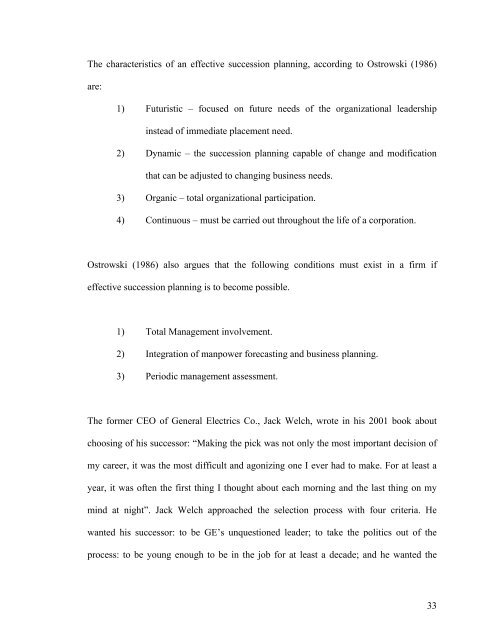CHAPTER 1: INTRODUCTION 1.0 Chapter Overview - DSpace@UM
CHAPTER 1: INTRODUCTION 1.0 Chapter Overview - DSpace@UM
CHAPTER 1: INTRODUCTION 1.0 Chapter Overview - DSpace@UM
Create successful ePaper yourself
Turn your PDF publications into a flip-book with our unique Google optimized e-Paper software.
The characteristics of an effective succession planning, according to Ostrowski (1986)are:1) Futuristic – focused on future needs of the organizational leadershipinstead of immediate placement need.2) Dynamic – the succession planning capable of change and modificationthat can be adjusted to changing business needs.3) Organic – total organizational participation.4) Continuous – must be carried out throughout the life of a corporation.Ostrowski (1986) also argues that the following conditions must exist in a firm ifeffective succession planning is to become possible.1) Total Management involvement.2) Integration of manpower forecasting and business planning.3) Periodic management assessment.The former CEO of General Electrics Co., Jack Welch, wrote in his 2001 book aboutchoosing of his successor: “Making the pick was not only the most important decision ofmy career, it was the most difficult and agonizing one I ever had to make. For at least ayear, it was often the first thing I thought about each morning and the last thing on mymind at night”. Jack Welch approached the selection process with four criteria. Hewanted his successor: to be GE’s unquestioned leader; to take the politics out of theprocess: to be young enough to be in the job for at least a decade; and he wanted the33
















